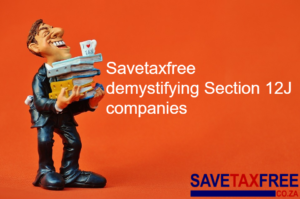TFSAs for children – what you need to know
Story Highlights
- TFSA, children saving, investment goals
Related Articles
Staff Reporter 2 November 2015
One of the important features about tax free savings accounts is there is no age limit. You can open one for the latest addition to the family on the day she is born.
Whether it’s their future university costs (which despite the best efforts of today’s students are still likely to be there in future) or just a nest egg for them to build on, a TFSA provides an efficient vehicle to build an asset.
Starting early shows the power of compounding: by in vesting the full R30 000 allowance at the start of each year, assuming the JSE continues its long-run average return of 16%, your little one will have a nest egg of almost R3m by the time she turns 18, with you having contributed a total of R500 000. Even after inflation, that will give her a useful start in adult life.
vesting the full R30 000 allowance at the start of each year, assuming the JSE continues its long-run average return of 16%, your little one will have a nest egg of almost R3m by the time she turns 18, with you having contributed a total of R500 000. Even after inflation, that will give her a useful start in adult life.
But there are some pitfalls to be aware of. First is that as soon as your princess turns 18, there is no longer any restriction on what she does with the money. So if backpacking in Bali suddenly becomes more of a priority than a medical degree, that’s her choice. Hopefully your successful parenting will have led her to make the best investment decisions with the resources you’ve provided, but just in case her teenage years convince you otherwise, you still have control of the money until she turns 18.
A more concerning aspect is that such a strategy would exhaust the life time limit of allowed contributions to TFSAs. Currently any person may only contribute R30 000 per year up to a lifetime limit of R500 000. That long-term ceiling will be reached during the 17th year if you are contributing the full annual amount. Beyond that point the TFSA is effectively closed as an option for your offspring for the rest of their lives. The limit applies to total contributions, so even if you withdraw money, you can’t put it back in. So using a TFSA for a university education may well be the best way to save, but once the money is spent the apple of your eye will no longer be able to use a TFSA for anything else.
But there are a few mitigating factors to that scenario. One is that, come 18, you don’t have to use the TFSA. If there are more effective ways to fund university – like if your door is being beaten down by scholarship providers – then you’re better off using those options. Also, we expect that government is going to relax the lifetime contribution limit in time. It has taken a cautious approach with the launch of TFSAs and is likely to relax about the tax implications of increasing limits in time.
That has been the experience of every other jurisdiction where similar regimes have been introduced. So we think the lifetime limit is not a serious barrier to using TFSAs for your kids.
There are other less tangible advantages too. Encouraging a savings habit right from the start is an important life skill to give your young ones. Whether your child is saving to splash on the latest Playstation, cellphone or expensive pair of sneakers, they know exactly what they’re saving for, which places more value on why they are doing it. It is also a good idea to involve them in the decisions over which instruments to choose for the TFSA.
Different types of TFSAs for different goals
When savings for your children’s future, you are probably facing a long time horizon. For short-term goals, cash deposits or an investment in retail savings bonds are probably the best options due to their liquidity and low level of risk. The returns may be lower than those of other investment types, but the risk of losing money is low and returns are almost guaranteed. Because the returns are low, though, using the tax shelter of a TFSA is likely to be unnecessary: existing tax allowances will be enough to cover any returns.
But with long-term investments, equity and property could be more suitable investments. Equity investments can be accessed in a TFSA via unit trusts or exchange-traded funds (ETFs). While an investment in unit trusts can range from low to high risk, depending on its mandate, it can yield significant returns, depending on the level of risk and duration of the investment.
Most ETFs are exposed to the JSE, with some focusing on particular sectors or types of shares. Equity ETFs are generally regarded as high-risk due to the short-term volatility of the stock market and are thus more suitable as long-term investments. Equities have the potential to yield inflation-beating returns but the risk of loss is also potentially greater than for cash or bond investments.
Whatever option you choose, it should be aligned with the savings goal you and your children have set out with a clear cut plan on the best way to achieve it.
For more ideas on investment strategies and how to maximise returns on your tax-free investments click here.






